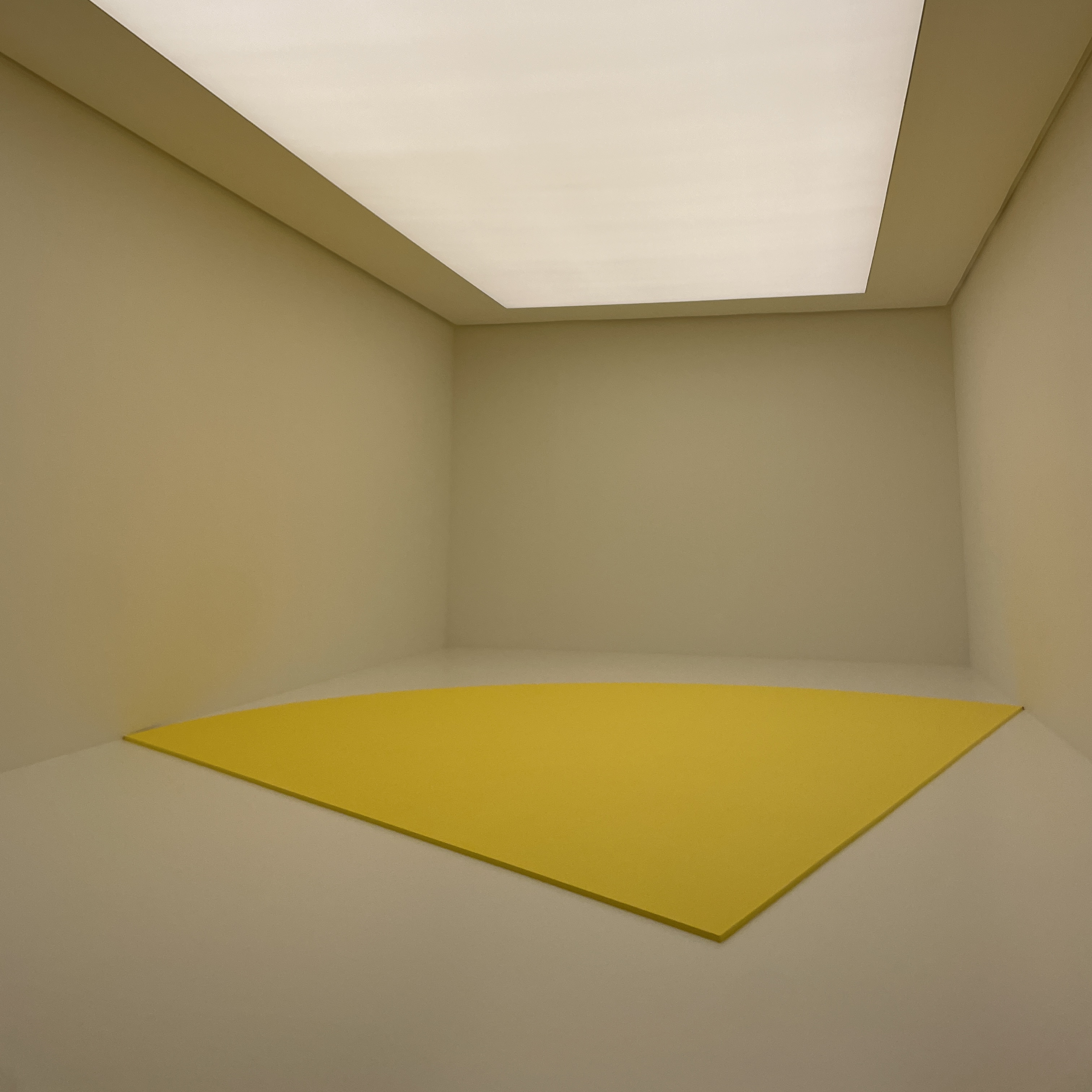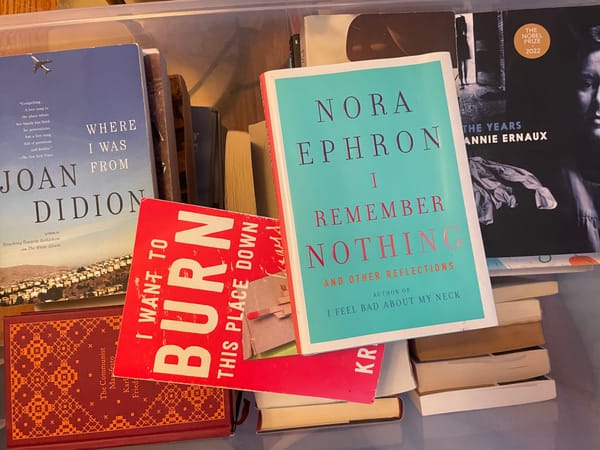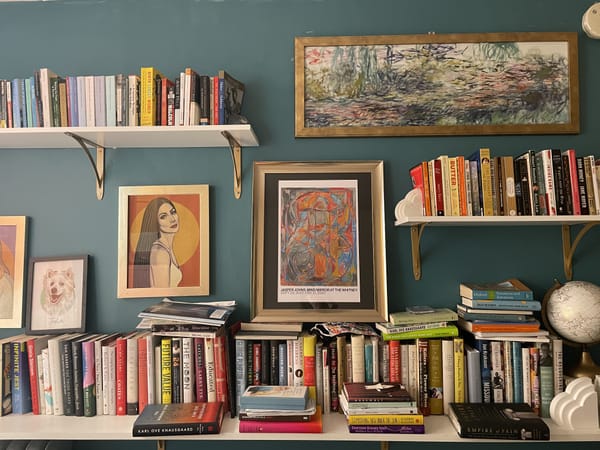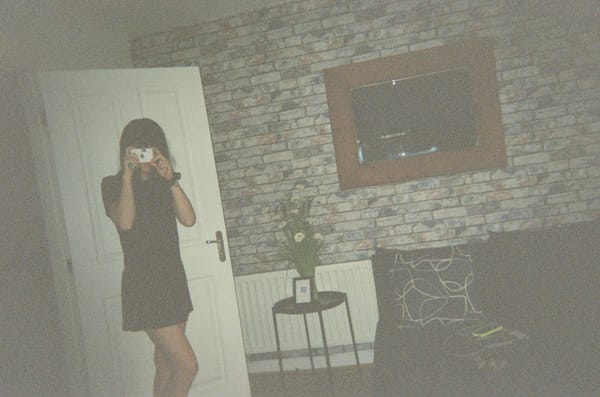Timefoolery
Emotional maturity, which I held off on developing for as long as I could, has guided me to one core question: How do I want to spend my time?
For most of my life, the concept of time failed to ensnare me in its constructs. No calendars, no routines, I was just pulled along by life’s whims. But without developing a sense of discernment on what I valued and what I needed — emotionally, physically, and spiritually — I gave away my own sense of agency in life.
What do I actually want to do with my life is a hard question to ask myself right now. In a practical sense, I realized that I felt creatively constrained by the career I spent ten years building, and lost my tolerance for those limits. On a much broader scale, it is difficult for me to conceive of what our society will look like in ten to fifteen years. Realistically, the complete dissolution of our social safety net and the wealth and power inequality in our country makes me feel fine with aimlessness and a little bit of hedonism still in my mid-30s.
It is a question that produces answers big and small: I want to wear contacts instead of glasses today; I want to reconfigure my career.
So, when I attended a session at the Strother School of Radical Attention and was asked, “what does attention mean to you?” my answer came to me quickly: Agency.
The SoRA is an experiential attempt at harnessing the growing sentiment that attention and time are our most valuable assets in a society that is designed to steal your time. This conversation seems to be happening everywhere I go: It’s the premise of two books by Jenny Odell, and Kyle Chayka’s book on algorithms seems to have broken the minds of everyone I know in the media business.
Much has been written about SoRA, and I recommend reading this piece in the New York Review of Architecture to get a full understanding of the concept and the program. The gist of a general session, which I attended last week, is to get a handful of strangers who resent their iphones to do a few strange little exercises to sharpen the sense of where attention goes and why.
In this room of people, I felt conflicted by my own participation in this program. Largely, I feel like a direct victim of the extreme quantification of attention after ten years working for journalism companies. Do you know that I have seen the way a reader’s engagement and interest is calculated and valued on a dashboard for story metrics? I have watched creative friends become obsessed with these metrics, viewing them as a foothold for stability in our crumbling industry.
This whole project of quantification has squeezed out the soul of our creative industries, and in that room I felt both completely victimized and guilty for participating in the machine.
The exercises performed at SoRA are abstract in concept, but ingenious in their provocation. The practice I elected to try during this session is called “In, Out, Between.”
“This practice explores attention directed ‘inward’ (to one’s internal bodily & emotional experience) and ‘outward’ to one’s physical surroundings. For each step, marked by a bell, direct your attention: 1. All In; 2, Half In, Half Out; 3. All In, All Out.”
Yes, a bell. The classic icon of cognitive retraining.
In the hallway of a strange building in Brooklyn, a group of us experimented with making deliberate choices about where we focused our attention. This process is relatively aligned with the type of work I do in therapy, but I struggle with it in that setting. I was surprised to feel myself naturally guiding my focus from internal to external without much discomfort.
I visited my interiority, then I transitioned to a state of visual observation and enjoyed noticing the geometric shadows that reminded me of Ellsworth Kelly. Then I went back to my interiority, where I checked in on the identity crisis I’ve been having for roughly the last two years. Anyway, I wish Ellsworth Kelly could have seen these shadows and shapes.

But the element of this exercise that genuinely made me feel threatened and challenged was the debrief where we each explained how we interpreted and experienced this In, Out, Between practice.
Someone in my group said they are most comfortable while being physically expressive, because (in part due to a language barrier), they find language to be a difficult medium. Others seemed to have a near-psychedelic experience with the prompt, allowing themselves to splay themselves against the concrete walls for a tactile experience.
I felt as though I learned a lot about these people very quickly while hearing how they used this exercise. One person kept referencing the concept of safety, something I now expect is a prominent concern in her life. Others said they felt like their bodies rejected their own attempts to focus inward, as if they’d barged into a room where their conscious selves are not invited.
I wrote on a notecard: “I don’t totally understand what everyone is saying. Their experiences are so different from mine and I can’t conceive of interpreting these prompts so differently. I find it really unsettling that we had such different experiences while doing the same thing.’
I’ll allow you all the gift of psychoanalyzing that one. But if you need a hint, a friend of mine asked me recently if I feel I should get to control the narratives of the lives of others around me.
The vision of SoRA is ultimately something much broader than people spending a few hours with their phones on do not disturb mode and doing quirky little exercises. They are attempting to provoke and harness the angst that many of us feel about the demands on our time, energy, and attention.
It reminded me of the consciousness-raising meetings of the mid-century. Individual angst carries no power, but collective action can generate meaningful pushback against the forms of living that are pushed on us against our will.
My experience at SoRA was fun, comfortable, and challenging, and other members of my session expressed feeling genuinely disoriented by the concepts presented that night. The facilitators quietly executed something that is incredibly difficult — they introduced new ideas to a room full of strangers, and everyone felt safe, not defensive.
So I’ll press on with the project of valuing my own time and attention, and hope that one day that value system ranks “housework” more highly than “walking to the pastry shop.” But inside that room and beyond it, this radical concept is becoming mainstream: Who determines how your time and attention are spent? Is it you? And if it’s not, what will you do to take control back?





